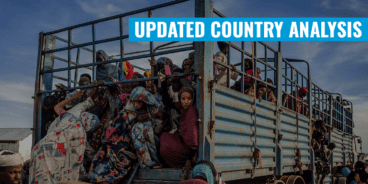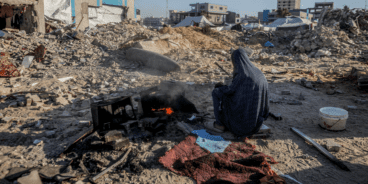
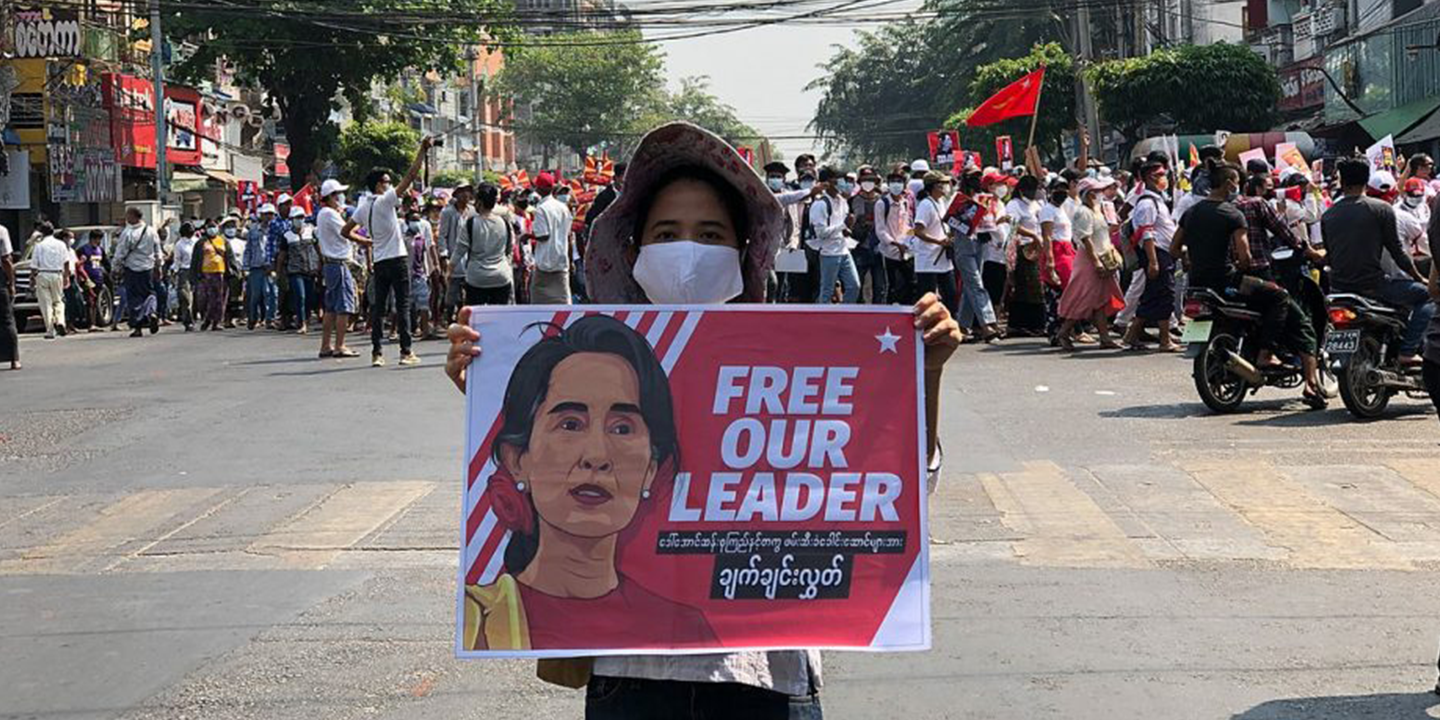
The Yearlong Failure to Protect Myanmar’s People and What to Do Now
This article was first published in The Diplomat.
There is much more the world can do to help the people of Myanmar in their struggle against the military dictatorship.
Today marks one year since Myanmar’s military, the Tatmadaw, launched a coup and overthrew the civilian-led government. Throughout the past year, the military has waged a war against its own people and perpetrated crimes against humanity and war crimes, including arbitrary arrests, torture, and scorched earth campaigns. Since the coup, more than 1,500 people have been killed and over 8,700 people remain detained, according to the Bangkok-based Assistance Association for Political Prisoners.
In the weeks following the coup, an unprecedented pro-democracy movement – known as the Civil Disobedience Movement – emerged and quickly spread across Myanmar. Despite the risks posed by the brutal Tatmadaw, tens of thousands of people mobilized to peacefully protest and repeatedly called on the international community to not only condemn the coup but also to act to prevent populations from facing further bloodshed.
Protesters specifically called on the international community to uphold the principle of the Responsibility to Protect (R2P), demanding the protection that they deserve. Some wore T-shirts emblazoned with “R2P,” while others used stencils to spray-paint, “We Need R2P, We Want Democracy” on streets. Many held signs bearing messages like “Welcome R2P in Myanmar,” “We Need R2P, Save Myanmar,” and “R2P, Prevent/Protect, End Impunity.”
The Responsibility to Protect populations from mass atrocity crimes – genocide, war crimes, crimes against humanity, and ethnic cleansing – was unanimously adopted by the United Nations in 2005 and sought to bring an end to the politics of indifference and inaction that had long characterized the international community’s inadequate response to atrocities. In adopting R2P, world leaders acknowledged that sovereignty bestows a moral responsibility upon a government to protect all of those within a nation’s borders. One of R2P’s three pillars stipulates that the international community has a collective responsibility to protect people from mass atrocities when the state is unwilling to do so or is a perpetrator itself.
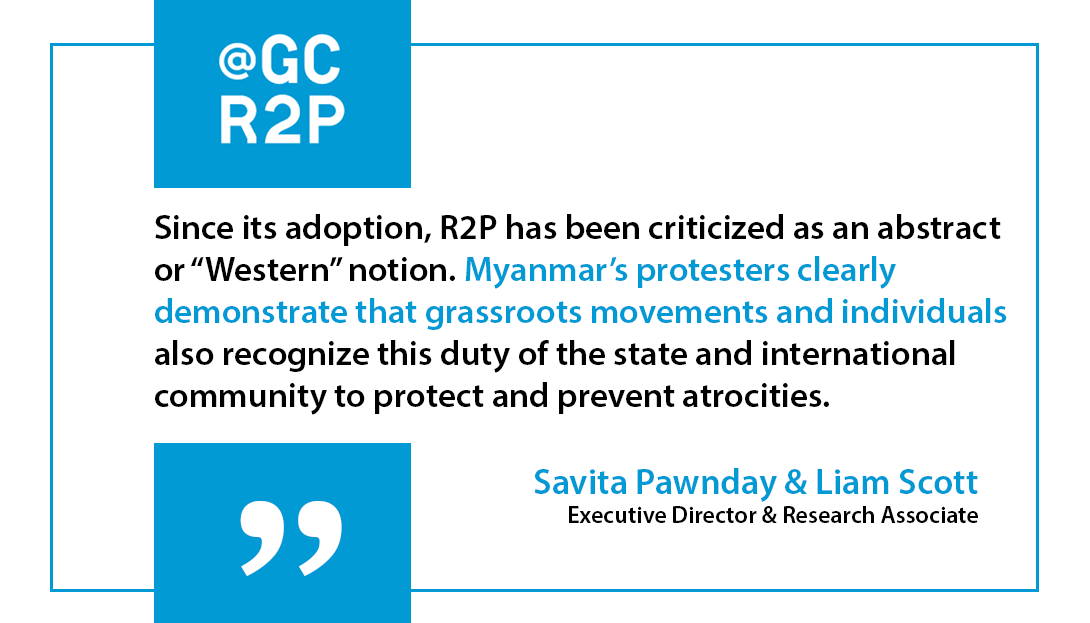
Since its adoption, R2P has been criticized as an abstract or “Western” notion, used only by U.N. policymakers and state leaders to justify the use of force or undermine the sovereignty of another state. Myanmar’s protesters clearly demonstrated that grassroots movements and individuals also recognize this duty of the state and international community to protect and prevent atrocities. R2P must centrally guide the global response to this crisis going forward.
The ongoing crisis in Myanmar is rooted in the international community’s failures to hold the Tatmadaw and its leaders accountable for past atrocities, including the 2017 genocide it committed against the Rohingya. Although the U.N. Human Rights Council established a Fact-Finding Mission on Myanmar and an Independent Investigative Mechanism for Myanmar to collect and preserve evidence of the crimes committed by the Tatmadaw, a generalized climate of impunity has persisted, emboldening the military to continue committing mass atrocities today. Myanmar’s authorities have also failed to comply with a set of four provisional measures ordered by the International Court of Justice under the 2019 lawsuit that the Gambia filed against Myanmar for violating its obligations under the 1948 Genocide Convention.
One year since the coup, civilian-led protests and an armed resistance continue. Conflict between the military and civilian militias, known as People’s Defense Forces (PDFs), and ethnic armed groups has intensified, bringing the country to the precipice of nationwide civil war. What began as a crackdown on protesters has escalated to large-scale military assaults against the armed resistance and civilians throughout the country.
While expressing concern over Myanmar in April, the U.N. High Commissioner for Human Rights, Michelle Bachelet, said that, “there are clear echoes of Syria in 2011. There, too, we saw peaceful protests met with unnecessary and clearly disproportionate force. The state’s brutal, persistent repression of its own people led to some individuals taking up arms, followed by a downward and rapidly expanding spiral of violence all across the country.”
Bachelet’s warnings are becoming a grim reality across Myanmar, where the Tatmadaw’s tactics, including airstrikes and massacres of civilians, now mirror those of the Syrian government.
Moreover, as the crisis has deteriorated over the past year, the inadequate response of the international community – especially the U.N. Security Council, the world’s primary body for maintaining international peace and security – has repeated its failures to halt atrocities in Syria for over a decade. The Association of Southeast Asian Nations (ASEAN), Southeast Asia’s primary regional body, has also manifestly failed to protect the people of Myanmar by urgently addressing the crisis.
The Tatmadaw’s success, and therefore its failure, hinge on its access to three main things: legitimacy, weapons, and money.
The U.N. has prevented the Tatmadaw from instating its preferred representative at the U.N., tacitly allowing Myanmar’s pro-democracy representative, Ambassador U Kyaw Moe Tun, to remain for now. Few countries have recognized the military as Myanmar’s rightful government. The military’s release of hundreds of detainees following ASEAN’s exclusion of Tatmadaw representation at its October summit, although followed by the rearrest of over 100 detainees, shows that the Tatmadaw craves legitimacy, especially from its neighbors, and wants to reestablish the “business as usual” status quo.
Imposing a global arms embargo would help derail the junta’s military efforts since most – if not all – of the Tatmadaw’s weapons are imported. In June the U.N. General Assembly urged member states to prevent the flow of arms into the country, but only the Security Council can impose a legally binding international arms embargo. However, Russia and China’s veto power – and their status as Myanmar’s top arms suppliers – ensures that such a measure is nearly impossible.
Due to Security Council inaction, individual states must take steps to limit the Tatmadaw’s capacity to commit atrocities. While a number of governments have imposed targeted sanctions or restricted arms sales and exports to Myanmar, more needs to be done. TotalEnergies, the French oil major, recently endorsed targeted sanctions and subsequently withdrew from Myanmar alongside U.S. energy giant Chevron. These developments should prompt France and the U.S. to impose targeted sanctions on the oil and gas sector, which is Myanmar’s single largest source of foreign currency revenue. Similarly, arm suppliers like India, which is currently on the U.N. Security Council, should ban arms sales to Myanmar in a bilateral capacity.
By mid-December nearly 300,000 people had been internally displaced in Myanmar, and an estimated 25,000 had fled to neighboring countries. Both numbers are now likely much higher. ASEAN’s continued tepid response belies the fact that the crisis in Myanmar could destabilize the wider region and lead to a massive refugee crisis, especially if the situation devolves into civil war. Myanmar’s neighbors have a responsibility to give temporary protection to people fleeing the violence, and to refrain from returning them to Myanmar. Action from individual ASEAN states, including condemnation, sanctions, and embargoes, would also go a long way in combating the junta.
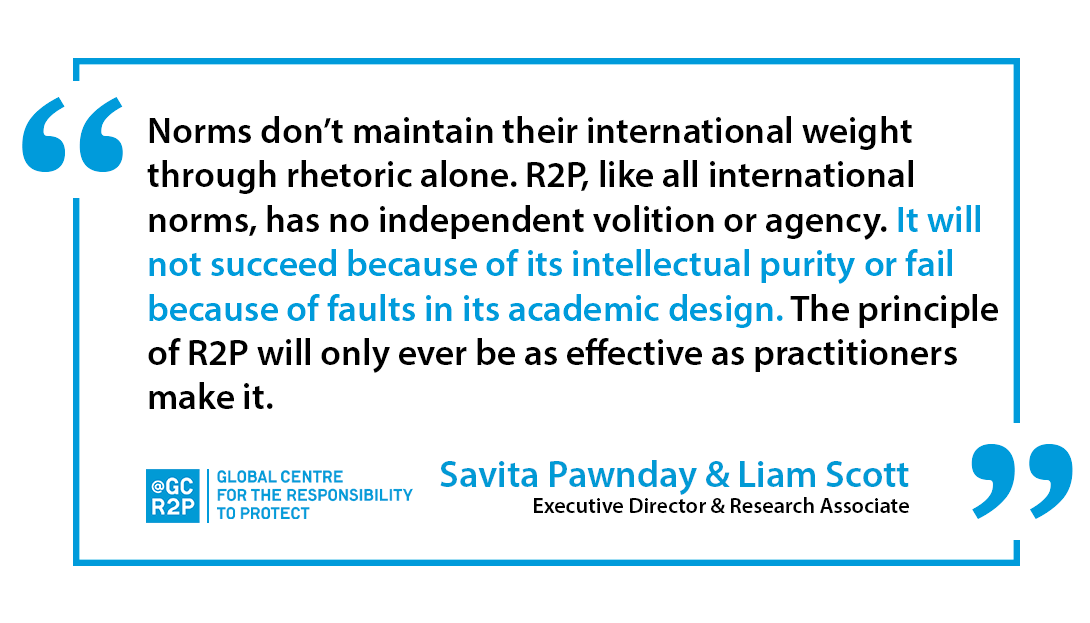
The previously frequent invocations of R2P have waned amongst Myanmar’s protesters – perhaps because they fell upon seemingly indifferent ears. Norms don’t maintain their international weight through rhetoric alone. R2P, like all international norms, has no independent volition or agency. It will not succeed because of its intellectual purity or fail because of faults in its academic design. The principle of R2P will only ever be as effective as practitioners make it.
As we mark the anniversary of the coup, we must honor the victims and survivors of the junta’s brutal violence. The people of Myanmar have stood resilient in the face of unspeakable levels of suffering, but amidst the risk of civil war their fate depends on concerted international and regional action.
Bachelet has previously stressed that “states must not allow the deadly mistakes of the past in Syria and elsewhere to be repeated.” But the Security Council, ASEAN, and individual states are indeed repeating those deadly mistakes with Myanmar. Their failure to respond effectively and swiftly to the crisis has already stained their record. Nothing blemishes reputations like the failure to halt the commission of atrocity crimes.
Amid a looming civil war and a deadlocked and ineffective Security Council, it remains imperative for individual states to use the tools of R2P at their disposal to prevent another Syria-like crisis from unfolding on our watch. In addition to imposing strict arms embargoes and targeted sanctions, these strategies include naming and shaming the Tatmadaw’s leaders, continuing to diplomatically isolate the junta, and pursuing justice and accountability for those persecuting and perpetrating violence against the people of Myanmar.
The international community’s collective commitment to R2P can impact lives on the ground – it’s just a matter of whether states have the will and courage to use it.
Related Content

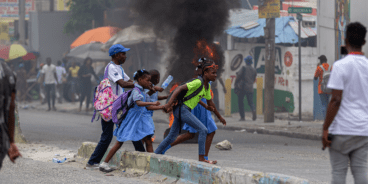
Atrocity Alert No. 436: Haiti, Myanmar (Burma) and Syria
